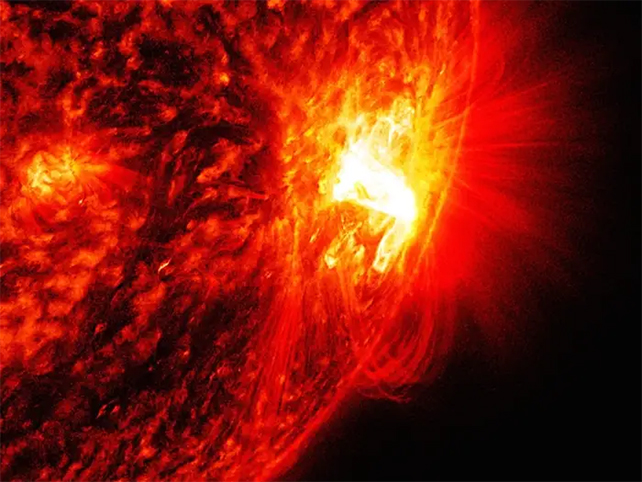A powerful solar flare flashed at Earth on Tuesday, sending an eruption of X-ray and ultraviolet radiation to our planet at the speed of light.
It was an "X-class" flare – the most powerful kind – and it caused a radio blackout for about one hour on the day side of Earth, in parts of southeast Asia, Australia, and New Zealand.
That's because the extreme solar radiation ionized parts of our planet's upper atmosphere, degrading high-frequency radio waves that travel there.
The flare occurred at 10:33pm ET on Tuesday.
The Sun, X-rated.🌞🚨
— ESA Operations (@esaoperations) March 29, 2023
Early this morning, a strong X-class #SolarFlare exploded from the Sun. The blast came from a #sunspot region called "AR3256" - catchy as ever.#SpaceWeather⛈️
📸@NASA SDO, 29 March 2023 pic.twitter.com/yjUsSGLdK3
This eruption follows a series of powerful events on the Sun, including two giant coronal holes and a series of eruptions, which caused the Northern Lights to appear in skies as far south as Arizona.
This may be a precursor to even more solar activity in the coming days.
The Sun is flaring up, and there's more to come
The Sun has already produced three moderate "M-class" flares – one level below X-class – in the past day, according to a Thursday report from the Space Weather Prediction Center of the National Oceanic and Atmospheric Administration.

That report forecast a chance of more M-class flares in the coming days, with a "slight chance" of another X-class flare on Thursday.
A space-weather forecast from the UK's Met office also warned that more moderate flares are possible over the next two days, due to a large, active group of sunspots facing Earth. Sunspots are small, dark regions where surface temperatures are lower than the surrounding plasma.
More solar activity can mess with tech but also fuel pretty lights
Tuesday's eruption was the seventh X-class solar flare so far this year, suggesting solar activity in 2023 will far surpass 2022, which saw seven X-class solar flares in total, according to SpaceWeather.com, a blog that tracks daily government data on the Sun and its impacts on Earth's atmosphere.
Though Tuesday's flare was powerful, it was on the lower end of X-class flares. It was ranked as an X1.2, but the Sun is capable of producing flares as big as X28, which can be devastating to technologies on Earth.
In addition to radio blackouts, flares and other solar eruptions can cause power blackouts, knock satellites out of orbit, and confuse GPS.
More often, though, solar activity triggers energetic displays of Northern Lights, or aurora borealis, sometimes pushing them further south than their normal Arctic occurrence.
More solar flares and eruptions are in store, and will probably increase in frequency, as our star ramps up to the peak of its 11-year solar cycle in 2025.
This article was originally published by Business Insider.
More from Business Insider: